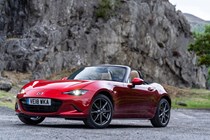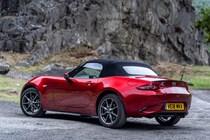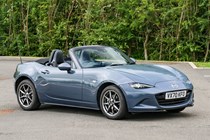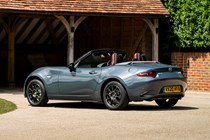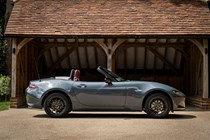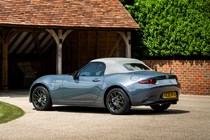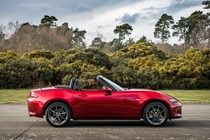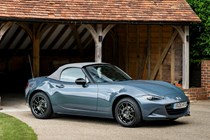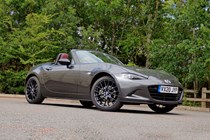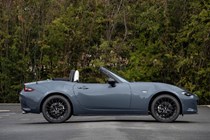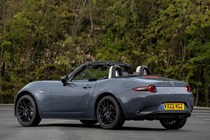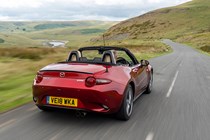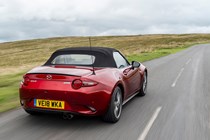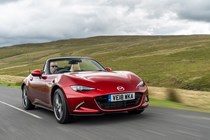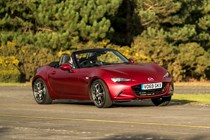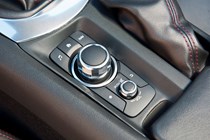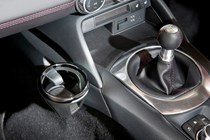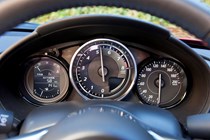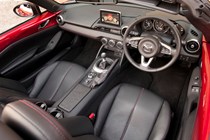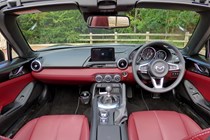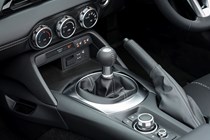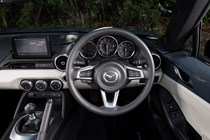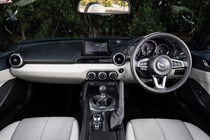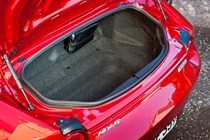
Mazda MX-5 engines, drive and performance
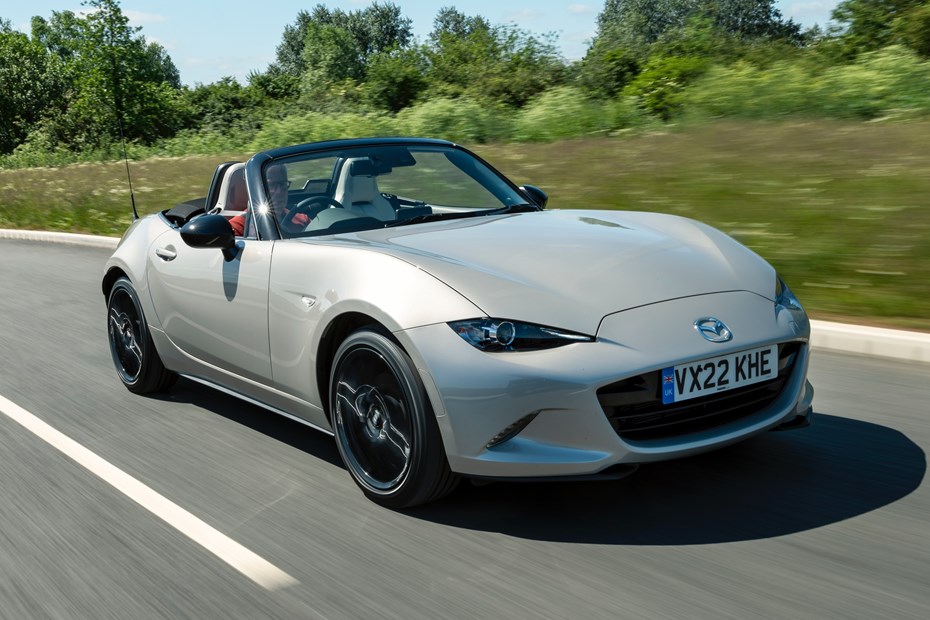
- Just two engines to choose from
- Later 2.0-litre models are best all-rounders
- But 1.5 is cheap to run and characterful
Petrol engines
The Mazda MX-5 offers buyers a choice of two petrol engines. Least expensive is the 1.5-litre, an engine Mazda engineers are said to be particularly fond of as they believe it fits with the car’s simple, lightweight design philosophy.
At launch, the 1.5-litre MX-5 was offered with 131hp. This was upgraded in the 2018 facelift to a dizzying… 132hp. Though it revs sweetly, sounds zingy and makes the car feel very light on its feet, some may find it lacking in overall power. You really have to use all the revs to make quick (ish) progress.
Going faster is where the 2.0-litre MX-5 comes in. It packs 184hp and is far more urgent than the 1.5-litre – going 0-62mph in 6.5 seconds rather than 8.3 seconds (pre-2018 update, the 2.0 made do with 160hp and fewer revs, and is a much less convincing upgrade).

The 2.0-litre MX-5 is also loads torquier, giving it more responsive in-gear acceleration and making it the clear pick of the range if you do value speed. The higher rev limit it now has means it feels almost as characterful as the 1.5 these days.
Both cars come as standard with a deliciously mechanical, short-throw six-speed manual gearbox, which adds a further measure of precision and enjoyment to the involving driving experience.
What’s it like to drive?
- Balanced handling encourages you to enjoy yourself
- 1.5-litre engine eager but ultimately slower than 2.0-litre
- Sport suspension delivers most focused drive
From the moment you drive off in the Mazda MX-5 you’ll know you’re in a keenly balanced, rear-wheel drive sports car. The steering, while sharp and relatively lightweight, is fluid and beautifully linear. This MX-5 feels darty and agile, something that’s emphasised by a seating position placed so close to the rear axle, as the car seems to pivot around your hip-point. It’s not the most feelsome set-up, though, and has almost no self-centring – both things that can take a little getting used to.
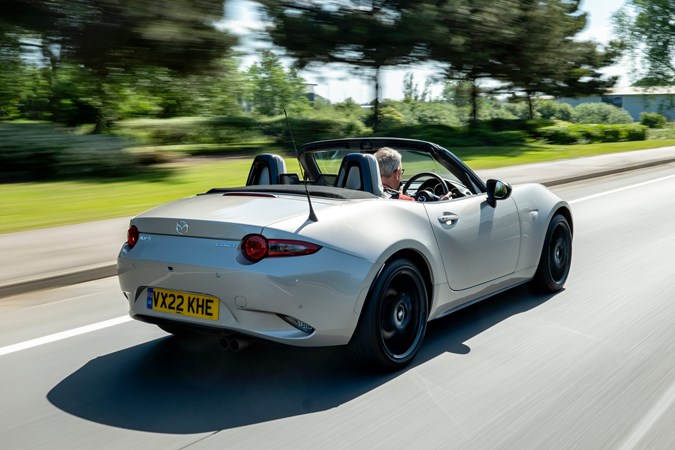
The MX-5’s standard suspension is surprisingly soft for a sporty car. This is great for comfort, but can present a challenge during faster driving. Generally speaking, the MX-5 is very communicative of its intentions, but the softness at the rear means it generates quite a bit of body roll, and sometimes, if you aren’t definite with your inputs, this can lead to the back of the car snapping out of line and attempting to overtake the front.
This isn’t really anything to worry about as long as you haven’t turned off the electronic stability control – and may in fact be considered a positive attribute by more enthusiastic drivers – but it can be slightly unnerving if you aren’t expecting it and does tend to happen very suddenly. Some adjustments to your driving style may be necessary to make the most of the standard car as a result, especially if you’re coming from a front-wheel drive hatchback.
The Sport suspension setup features more aggressive Bilstein dampers. While these deliver a much firmer ride, the attraction is far flatter cornering thanks to much-reduced levels of body roll. This allows you to travel faster, and with greater confidence – but doesn’t mean roll-oversteer is completely eliminated (whether deliberately provoked or caused by clumsiness). There’s definitely a reason Mazda has updated the stability control in 2022 to tame some of the MX-5’s more wayward habits, but you’ll have to be going some to really be worrying about this on the road.
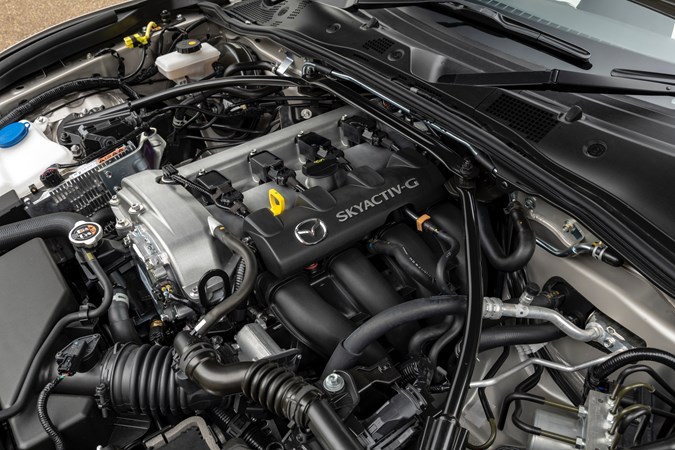
All 2.0-litre MX-5s also feature a mechanical limited-slip differential, which further improves handling predictability and grip. As a result of this, while 1.5-litre models always feel ‘fun’ it’s 2.0-litre Sport variants that seem most like a ‘proper’ sports car. Especially the more powerful 184hp models.
There is a vast MX-5 enthusiast scene, covering everything for styling personalisation to performance tuning. So if you want an even faster MX-5, this is relatively easily achieved if you don’t mind spending the money. We’ve tested an MX-5 BBR Turbo, which is one example of how this can be done.



